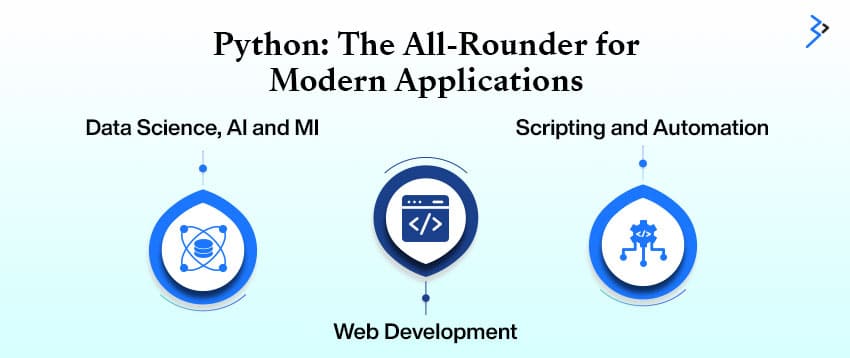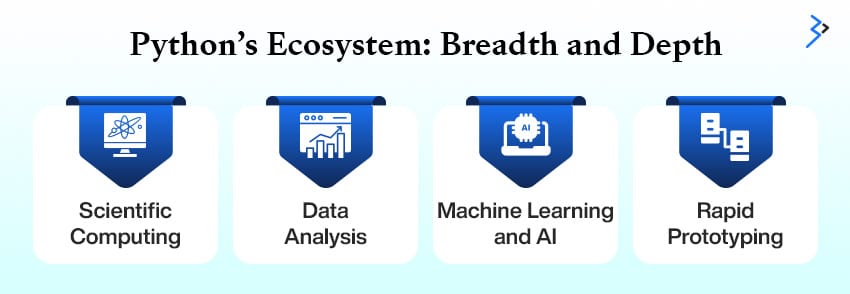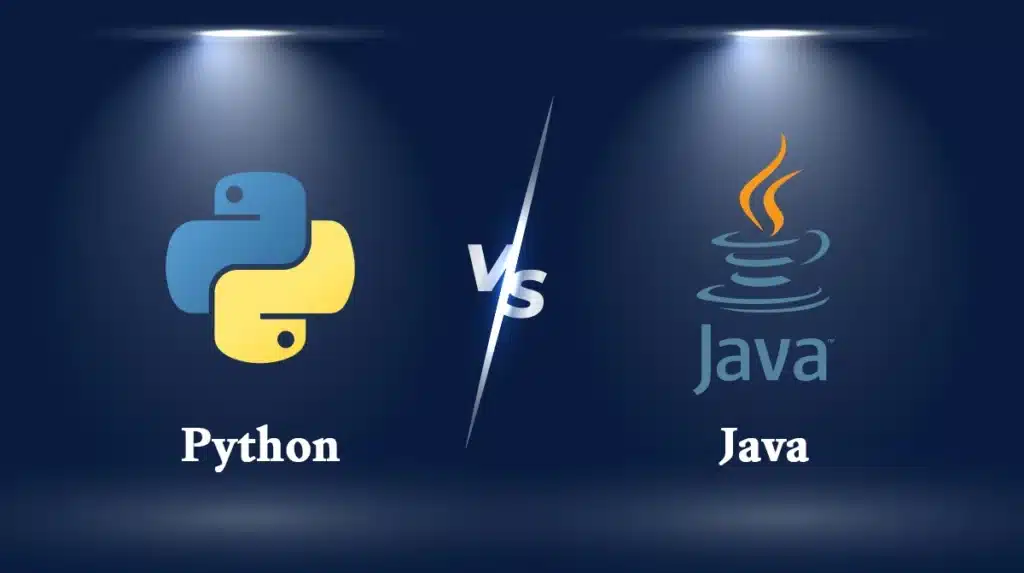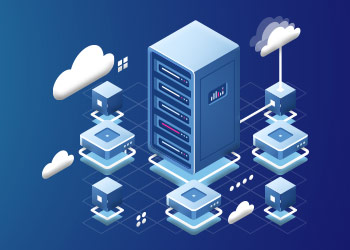When starting a python software development company journey, one of the first and most crucial decisions you’ll make is choosing the right programming language. Among the countless options available, Python and Java consistently stand out as two of the tech world’s most popular and trusted languages. But which one is right for your project?
To put their popularity into perspective, the 2024 Stack Overflow Developer Survey highlights Python and Java as two of the top five most commonly used programming languages. Python, with its clean and beginner-friendly syntax, has surged in popularity thanks to its versatility in fields like data science, artificial intelligence, and web development. Java, on the other hand, has been a steadfast choice for enterprise-level applications, mobile development (thanks to Android), and backend systems for decades.
The story of these two languages begins decades ago. Python, created by Guido van Rossum in 1991, was designed with simplicity and readability in mind, making it an ideal choice for new programmers. Java, developed by James Gosling in 1995 at Sun Microsystems, was built with the principle of “write once, run anywhere” (WORA), aiming to create portable and robust applications. Over the years, both languages have grown immensely, supported by thriving developer communities and evolving ecosystems.
Choosing the right programming language isn’t just about personal preference—it directly impacts your project’s development speed, performance, scalability, and overall success. By understanding their strengths, limitations, and use cases, you can align the language’s capabilities with your project’s unique needs.

Read More-: Unleashing Insights: Python’s Dominance in Data Analytics
Syntax and Ease of Use
For anyone starting their programming journey, syntax can either be an inviting gateway or a daunting obstacle. Here’s where Python truly shines.
Python is renowned for its simplicity and readability. Its syntax is almost like writing plain English, which lowers the barrier to entry for beginners. Python avoids excessive punctuation or rigid rules, allowing developers to focus on problem-solving rather than memorizing complex structures. For instance, here’s a simple “Hello, World!” program in Python:
| print(“Hello, World!”) |
Compare that to Java, which requires a bit more structure:
| public class Main { public static void main(String[] args) { System.out.println(“Hello, World!”); } } |
While Python prioritizes brevity and clarity, Java leans toward verbosity. This verbosity might seem cumbersome at first, but it serves a purpose. Java’s structured approach enforces best practices and encourages developers to think about object-oriented principles. This structure particularly benefits large-scale, complex projects where maintainability and collaboration are paramount.
Take loops as another example:
Python’s loop is concise and intuitive:
| for i in range(5): print(i) |
Java’s loop, while longer, provides explicit control:
| for (int i = 0; i < 5; i++) { System.out.println(i); } |
If you’re seeking a language that allows you to write and test ideas with minimal setup quickly, Python is your go-to. However, if you value strict type-checking and the robustness of a more structured syntax, Java is worth considering. Ultimately, Python’s simplicity makes it an excellent choice for rapid development and prototyping, while Java’s structure shines in long-term projects requiring scalability and teamwork.
Performance and Speed
Regarding performance, Java and Python differ significantly due to their underlying architectures.
Java is a compiled language. This means that before the code runs, it’s translated into bytecode by the Java compiler. The Java Virtual Machine (JVM) then executes this bytecode, making the process faster and more efficient. Additionally, Java benefits from Just-In-Time (JIT) compilation, where frequently used code paths are optimized at runtime, resulting in faster execution.
Python, on the other hand, is an interpreted language. The Python interpreter reads and executes code line by line, which can slow down execution compared to compiled languages like Java. This difference is especially noticeable in CPU-intensive tasks or applications requiring real-time processing.
Let’s compare the execution speed of a simple program that sums a large list of numbers:
In Python:
| numbers = list(range(1, 1000000)) total = sum(numbers) print(total) |
In Java:
| import java.util.stream.IntStream; public class Main { public static void main(String[] args) { int total = IntStream.range(1, 1000000).sum(); System.out.println(total); } } |
Java’s compiled nature generally results in faster execution for tasks like this. However, Python compensates for its slower runtime with its vast ecosystem of libraries and frameworks. For example, Python’s NumPy and Pandas libraries are optimized for high-performance operations, often leveraging C extensions under the hood to achieve speeds comparable to Java.
It’s also important to consider the context of your project. Java excels in scenarios requiring consistent, high-speed performance, such as game development or financial systems processing massive amounts of data. Conversely, Python’s flexibility and rapid development capabilities make it ideal for projects like web applications, data analysis, or machine learning models where execution speed is less critical than development speed.
A real-world example can illustrate these differences. Suppose you’re building a chatbot for customer support. If the chatbot needs to process thousands of user requests per second, Java’s speed and scalability would make it the better choice. However, if your priority is quickly developing and iterating on machine learning models for natural language understanding, Python’s extensive AI and data science libraries would likely save time and effort.
Finally, it’s worth noting that performance isn’t solely about language choice. Efficient coding practices, algorithm optimization, and leveraging the right tools can significantly impact performance regardless of whether you choose Python or Java.
Read More-: Exploring Python’s Leading Role in Data Analytics and Its Key Advantages
Use Cases and Applications
Understanding their practical applications can make all the difference when deciding between Python and Java. Let’s dive into the real-world use cases for these two programming giants to help you see where they shine and why.

Python: The All-Rounder for Modern Applications
Python’s simplicity and versatility make it an unbeatable choice for various fields. If you’re stepping into programming or looking for a language to tackle today’s cutting-edge projects, here’s where Python excels:
- Data Science, Machine Learning, and Artificial Intelligence: Python’s libraries, such as TensorFlow, Pandas, and Scikit-learn, make it a favorite among data scientists. Whether you’re predicting stock trends or building a chatbot, Python simplifies these complex tasks.
- Scripting and Automation: Python’s clean syntax is perfect for automating repetitive tasks. From organizing files to web scraping, you can save hours with just a few lines of code.
- Web Development: Frameworks like Flask and Django power efficient, scalable web applications. Whether it’s a personal blog or a complex eCommerce site, Python is up to the task.

Java: The Stalwart for Enterprise Solutions
Java has been a cornerstone of enterprise-level development for decades, and it is known for its robustness and scalability. If your needs revolve around building systems that handle immense traffic or operate across platforms, Java is your ally:
- Enterprise-Level Applications: Banking systems and enterprise-grade applications leverage Java’s reliability and security. Its backward compatibility ensures that even older systems can integrate seamlessly.
- Android App Development: Java powers Android apps, making it a must-know language for mobile developers.
- Backend Development: Java’s Spring framework allows developers to create high-performing and scalable backends.
- Cross-Platform Capabilities: The Java Virtual Machine (JVM) ensures that Java code runs smoothly across multiple platforms, reducing development headaches.
Comparison Table: Use Cases
| Feature/Task | Python | Java |
| Data Science/AI | TensorFlow, Pandas, Scikit-learn | Limited ecosystem |
| Web Development | Flask, Django | Spring Framework |
| Mobile Apps | Limited | Android app development |
| Enterprise Applications | Moderate | Excellent for large-scale systems |
| Scripting/Automation | Superior | Limited |
Ecosystem and Libraries
Every programming language is only as strong as its ecosystem, and both Python and Java boast powerful tools and resources. Let’s explore their offerings.

Python’s Ecosystem: Breadth and Depth
Python’s vast ecosystem empowers developers to quickly and effectively bring ideas to life. Its libraries cover everything from scientific computing to data visualization, making it a go-to choice for rapid prototyping and innovation.
- Scientific Computing: Libraries like NumPy, SciPy, and Matplotlib make Python indispensable in academia and research.
- Data Analysis: Pandas and PySpark allow for the seamless handling of big data.
- Machine Learning and AI: Python dominates this domain, along with TensorFlow, Keras, and PyTorch.
- Rapid Prototyping: Python’s lightweight syntax and tools, such as Jupyter Notebooks, allow you to test ideas with minimal setup.

Java’s Ecosystem: Reliability at Scale
Java’s ecosystem is synonymous with building secure, scalable systems. Its frameworks and tools focus on maintaining high performance in enterprise environments.
- Enterprise Solutions: Frameworks like Hibernate and Spring streamline database management and backend development.
- Large-Scale Systems: Java’s ecosystem ensures seamless operation for high-traffic systems, from eCommerce platforms to financial software.
- Cross-Platform Libraries: Tools like Apache Maven and Gradle ensure consistency across development and deployment stages.
Community-Driven Resources
Both Python and Java benefit from active developer communities, leading to extensive third-party libraries and integrations:
- Python: Community-driven libraries such as Beautiful Soup (web scraping) and PyGame (game development) cater to niche needs.
- Java: Libraries like Apache Kafka (real-time data pipelines) and Log4j (logging) make Java irreplaceable in certain industries.
Comparison Table: Ecosystem Strengths
| Feature | Python Ecosystem | Java Ecosystem |
| Scientific Computing | NumPy, SciPy, Matplotlib | Minimal |
| Enterprise Frameworks | Limited | Hibernate, Spring |
| Machine Learning | TensorFlow, PyTorch | Limited |
| Deployment Tools | Docker, Ansible | Apache Maven, Gradle |
| Big Data | PySpark | Apache Hadoop |
Community Support and Learning Resources
No matter where you are in your programming journey, the community you’re part of and the learning resources available can significantly impact your success. Both Python and Java have vibrant ecosystems in this regard.
Python: Friendly and Accessible
Python’s rise in popularity has been fueled by its beginner-friendly nature. Whether you’re self-taught or learning in an academic setting, Python provides a welcoming environment:
- Academic and Online Courses: From Coursera to Udemy, Python is often the language of choice in beginner-level programming courses.
- Rich Documentation: Python’s official website offers clear and concise documentation, perfect for quick learning.
- Beginner-Friendly Communities: Platforms like Reddit’s r/learnpython and Python Discord are filled with newcomers and experts eager to help.
Java: Industry Leader
Java’s longevity and strong presence in the industry make it a robust choice for professionals seeking a structured path:
- Industry-Level Documentation: Java’s detailed API documentation is a treasure trove for understanding its libraries and frameworks.
- Professional Training Programs: Many organizations offer Java certification programs, ensuring a solid foundation for aspiring developers.
- Developer Forums: Stack Overflow, GitHub, and Oracle’s Java forums host a wealth of knowledge for troubleshooting and best practices.
Examples of Popular Forums and Resources
| Platform | Python Resources | Java Resources |
| Stack Overflow | Troubleshooting, beginner projects | Enterprise-level problem-solving |
| GitHub | Open-source AI/ML projects | Backend and enterprise projects |
| r/learnpython, discussions | r/java, discussions | |
| Coursera/Udemy | Python for Everyone, AI/ML courses | Enterprise Java, Spring Boot |
Career Prospects and Demand
Choosing the right programming language is not just about syntax or features; it’s about aligning with your career aspirations and the job market demands. Let’s break this down:
Python’s Relevance in Emerging Fields
Python has become the go-to language for cutting-edge fields such as artificial intelligence (AI), machine learning (ML), and data analysis. Here’s why:
- Simplicity and Accessibility: Python’s easy-to-learn syntax makes it a favorite among beginners and professionals.
- Rich Ecosystem: Libraries like TensorFlow, PyTorch, and Pandas streamline complex tasks.
- Adoption Across Industries: From healthcare to finance, Python powers predictive models, data visualization, and automation.
Java’s Dominance in Enterprise Applications
Java continues to be a powerhouse in enterprise-level development and Android app creation:
- Scalability and Performance: Ideal for large-scale applications requiring robust performance.
- Versatility: From banking systems to e-commerce platforms, Java delivers.
- Android Development: Java’s integration with Android SDK makes it indispensable for mobile app developers.
Insights from Job Portals
To gauge demand and compensation, let’s consider real-world data:
| Language | Average Salary (US) | Top Industries |
| Python | $120,000/year | AI, Data Science, IoT |
| Java | $105,000/year | Enterprise, Android Development |
Additionally:
- Indeed shows Python-related jobs growing by 22% year-over-year.
- Glassdoor lists Java among the top 10 in-demand programming skills.
Key Takeaway:
Python dominates emerging tech, while Java is strong in traditional enterprise domains. Identify and align your interests with the language that best suits your career goals.
Future Trends and Longevity
When choosing a programming language, understanding its trajectory is crucial. Here’s a glimpse into the future:
Python’s Growth Trajectory
Python’s popularity shows no signs of slowing down. Here’s why:
- AI and Machine Learning: The explosion of AI applications keeps Python at the forefront.
- Internet of Things (IoT): Python’s lightweight frameworks make it a preferred choice for IoT devices.
- Data Science Expansion: With big data and analytics gaining traction, Python remains a vital tool.
Example: Companies like Netflix and Spotify leverage Python for recommendation engines and data insights.
Java’s Staying Power
Despite being over two decades old, Java remains indispensable:
- Enterprise Application Maintenance: Many organizations rely on Java development company to support legacy systems.
- Cloud Computing: Frameworks like Spring Boot make Java relevant in microservices and cloud-native apps.
- Evolving Tools: Enhancements in Java 20 ensure its adaptability to modern needs.
Example: Amazon uses Java extensively for its backend operations.
Emerging Technologies
Both languages are poised to excel in specific areas:
- Python: Blockchain, quantum computing, and generative AI.
- Java: Augmented reality (AR), virtual reality (VR), and fintech solutions.
While Python leads in innovation, Java’s resilience ensures it remains a key player. Both are future-proof and cater to different niches.
When to Choose Python or Java
The right language depends on your project’s requirements, team expertise, and long-term goals. Let’s explore:
Factors to Consider
- Project Type:
- Python: Prototyping, AI models, data analysis.
- Java: Enterprise apps, mobile development.
- Team Expertise:
- Choose a language your team is comfortable with to reduce onboarding time.
- Scalability Needs:
- Java’s robust frameworks make it ideal for large, scalable applications.
Practical Scenarios
- Scenario 1: You’re building a chatbot for customer support. Choose Python for its natural language processing libraries.
- Scenario 2: Developing a banking system? Opt for Java to ensure high performance and security.
- Scenario 3: Starting with programming? Python is beginner-friendly with immediate applications.
Understand your project’s scope and team’s skill set to make an informed decision.
Read More-: A Guide to Selecting the Best Java Framework for Your Microservices
Wrap Up!
Choosing between Python and Java isn’t about which is better; it’s about which fits your needs. Consider this:
- Python: Ideal for rapid prototyping, AI, and data science.
- Java: Perfect for enterprise-level systems and Android apps.
The key is experimenting, exploring, and deciding based on your goals. Start by diving into tutorials, contributing to projects, and sharing your journey with the community.
Connect with our experts if you want to work with Python or Java. Brainvire will help you grow together.
FAQs
Is Python or Java better for beginners?
Python is better for beginners due to its readable syntax and fewer complexities. Java, however, is ideal for learning the fundamentals of object-oriented programming.
Which language has more job opportunities?
Both are in high demand. Python excels in AI, data science, and web development roles, while Java dominates enterprise-level jobs and Android app development.
Can Python replace Java in enterprise applications?
Unlikely. Java’s scalability, strong security, and robust frameworks ensure its dominance in enterprise systems, while Python is often used for specialized tasks.
How do Python and Java handle cross-platform development?
Python uses tools like PyInstaller to be flexible across platforms. Java adheres to its “write once, run anywhere” philosophy, making it inherently cross-platform with the Java Virtual Machine (JVM).
Related Articles
-
Software Testing vs. Dynamic Testing – Make Your Decision For Effective Software Testing
While software application development is becoming a pivotal component among the enterprises and organizations to streamline their business process, testing software applications for quality has become equally important for the
-
Crucial Cloud Migration Checklist For Your Seamless Cloud Journey
Over the past few years, widespread global cloud adoption has been observed in the IT industry. Companies are increasingly investing in cloud migration and why wouldn’t they? Cloud migration provides
-
Azure Machine Learning: A Walkthrough to Know the Platform Better
Introduction A business might be on the verge of implementing machine learning in the organization’s operations. However, there might be some challenges that might hold it back in adopting the




